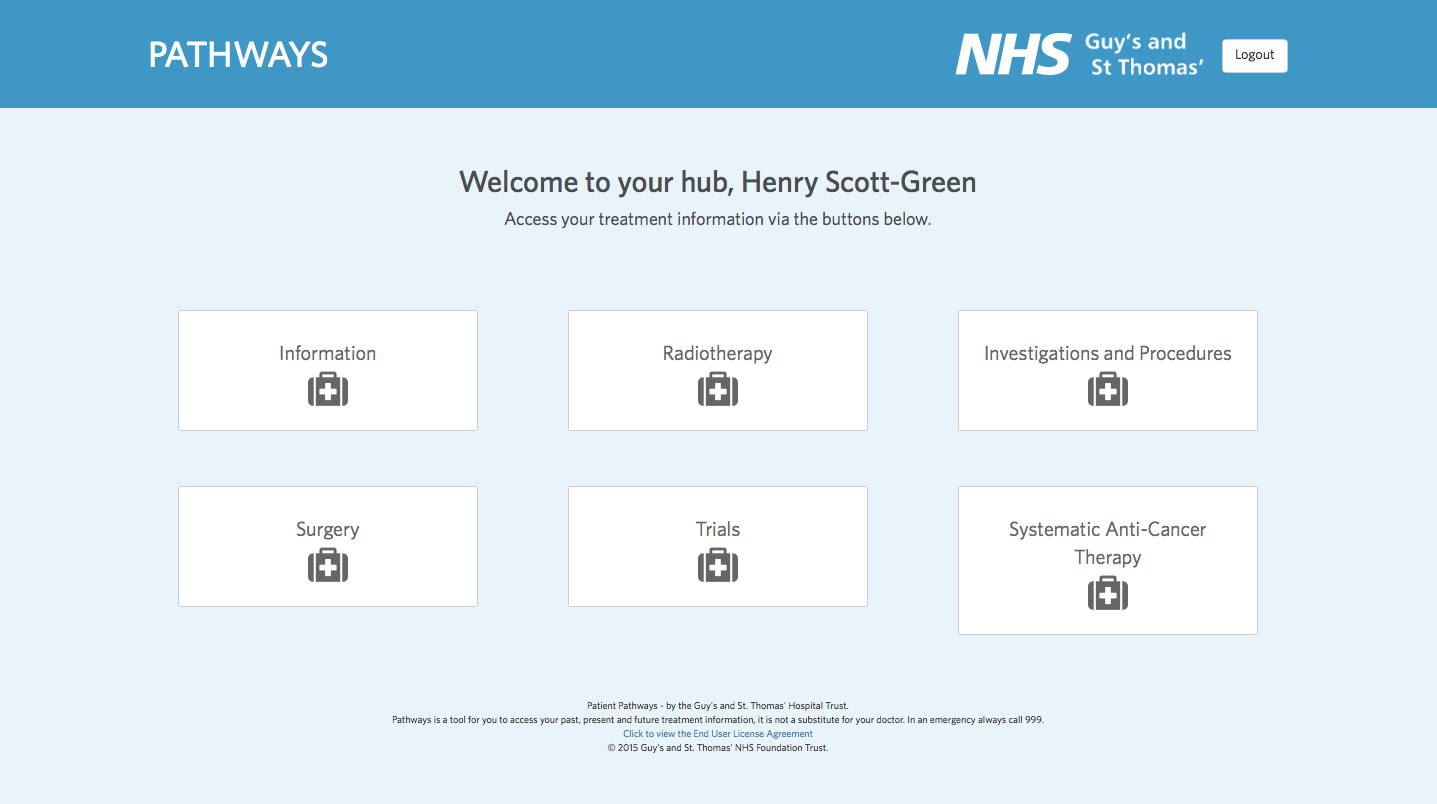Pathways is a collaborative project between UCL Computer Science and Guy's and St. Thomas' NHS Trust. Pathways provides centralized access to treatment, symptom and nutrition information for every patient. Pathways revolutionizes patient involvement in the decision making process, and replaces the need for paper based systems information delivery symptoms that often fail to meet patient’s needs.
The Guy’s and St. Thomas’ NHS trust is world famous for medical breakthroughs and innovation, and their hospitals have a long and proud history of clinical excellence and world leading research. One of the core values of the trust is to put patients first, and Guy’s and St. Thomas’ hospitals have pledged to improve the way that they include patients in the decision making process. As part of this commitment to excellence, the trust commissioned a team of UCL Computer Scientists to revolutionise the way critical information was delivered to patients, enabling greater involvement in the decision making process.
The development team consists of Alex Gamble, the team leader, Henry Scott-Green and Iustin Sibiescu, who are second year Computer Science students at UCL. The project has been undertaken as part of the COMP2013 and COMP2014 modules of the UCL Computer Science BSc course.
Designed to solve a real problem for hundreds of cancer patients in London, Pathways was built from the ground up to make every patients clinical experience seamless. Until now, critical treatment, symptom and nutritional information designed to assist in the decision making process was distributed to patients via photocopied handouts. The trust identified a problem with this system – handouts were sometimes unavailable to doctors, and were frequently misplaced by patients. The result? Information that should have been provided to patients to help in the decision making process was missing, resulting in confusion and low satisfaction scores for the trust.
To solve this problem we built Pathways, a multi-platform product that provides patients with all the information they need on their treatment, symptoms and nutrition. Pathways helps users to make informed decisions about their treatment options, increasing their understanding of their disease and helping to reduce their anxiety and confusion about the future.
Pathways is a multi-faceted product, differing greatly dependent on if a medical or patient account logs in.
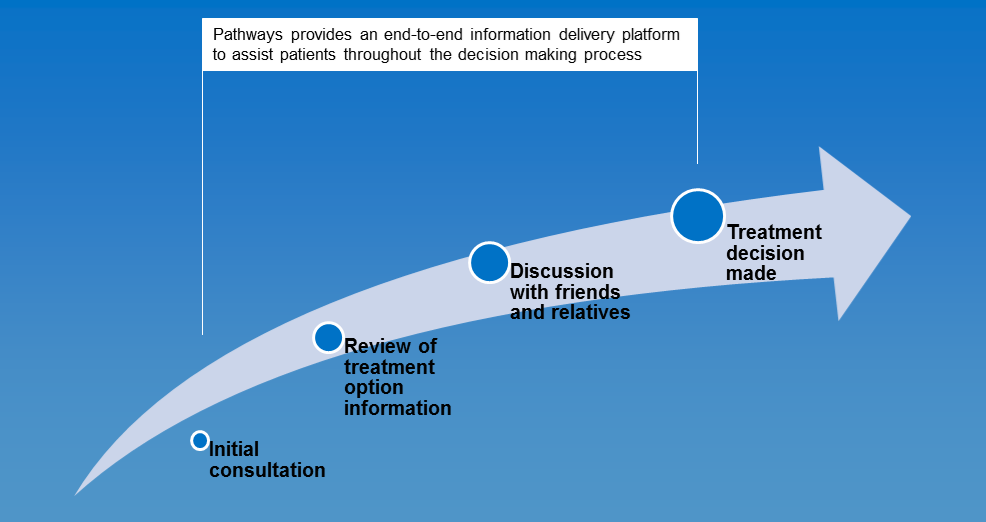
To a patient, Pathways is a simple and intuitive way to access and navigate treatment information. The patient will have been introduced to Pathways during their first consultation at the trust, where they will have been registered into the system. They can now log in to Pathways from anywhere they have an internet connection, and upon login are presented with a straightforward home page. From this homepage they can select their treatment information from the various categories available, as well as navigate back through information that had been previously assigned.
To a doctor or nurse, Pathways is a powerful tool to better inform patients of the information and treatment options available to them. Medical team members have accounts created for them by a super-user, at which point they are assigned to their clinical team. From this point they are able to autonomously operate the system. They have the power to register new patients within their teams without the input of a super user, the power to update and add to the information set in the application, as well as to update the information available to any patient in their team. This enables doctors to assign information to patients in an extremely straightforward manner; they select a patient from the list of all those in their team, see the information currently assigned to them, have the option to update this selection and modify patient details.
Because of the nature of the product, and its target userbase, Human Computer Interaction was one of our highest priorities when developing Pathways. We iteratively improved and refined the design, user interface and user experience, following numerous rounds of testing and evaluation. To evaluate the design we created a suite of user personas that we used to complete 'in-the wild' and 'think-aloud' testing. These testing methods allow us to evaluate how a user interacts with the product in an interrupted and natural environment, and results in valuable information we can use to improve the design of the application.
Patient
The patient user experience has been designed with extensive consideration of human computer interaction principals. During the design process we investigated the spectrum of users to whom the application must be accessible. The findings of this investigation presented a challenge to the design process – Pathways was to be used by a broad spectrum of users, from 30 year-old tech-savvy professionals to the elderly and frail with little understanding of technology.
Medical Professional
The medical professional user experience has been designed again with consideration of human computer interaction. There is significantly more functionality available on this side of the product, and consequently more depth of user experience. Fortunately, users of this side of the product are familiar with the complex IT systems mandated by the NHS, and consequently the interaction design was completed with use of affordance from the existing NHS systems, such the all patient display on the left hand side.
Some of the sketches and mock-ups we created in the process of designing and evaluating our user interface may be seen below.
First patient hub sketch:

Patient hub UI mock-up:
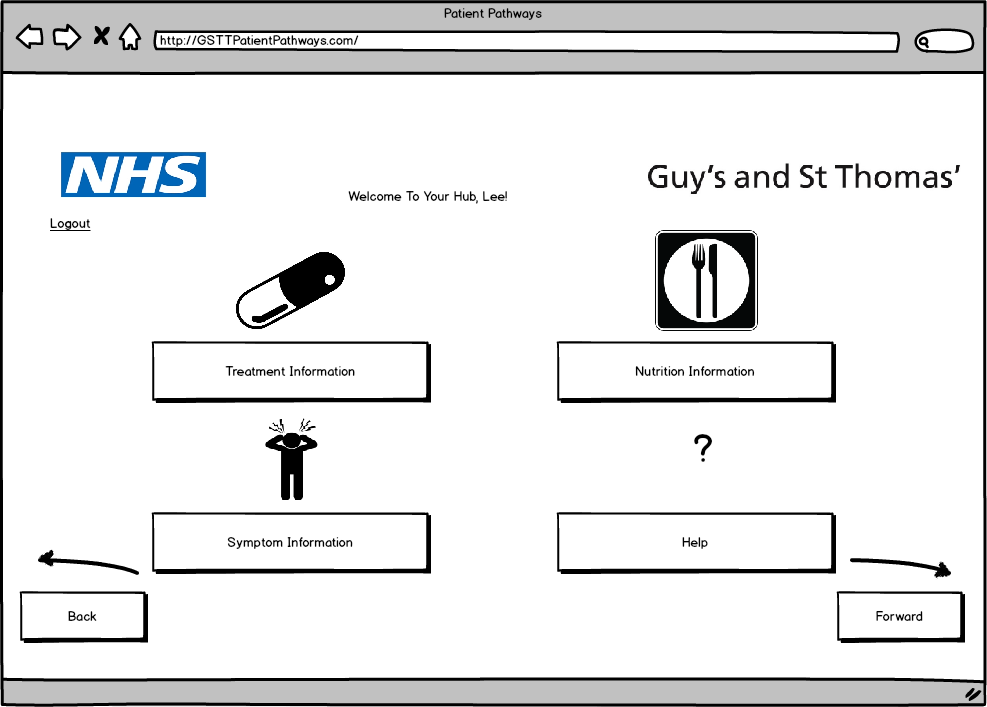
Medical hub UI mock-up:
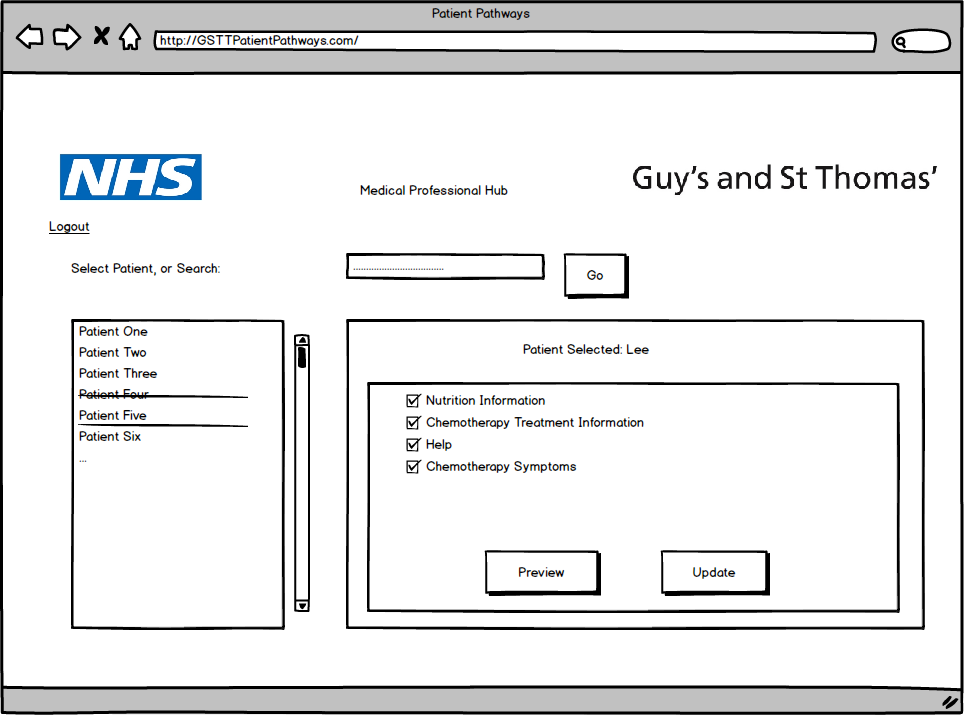
Module update UI mock-up:
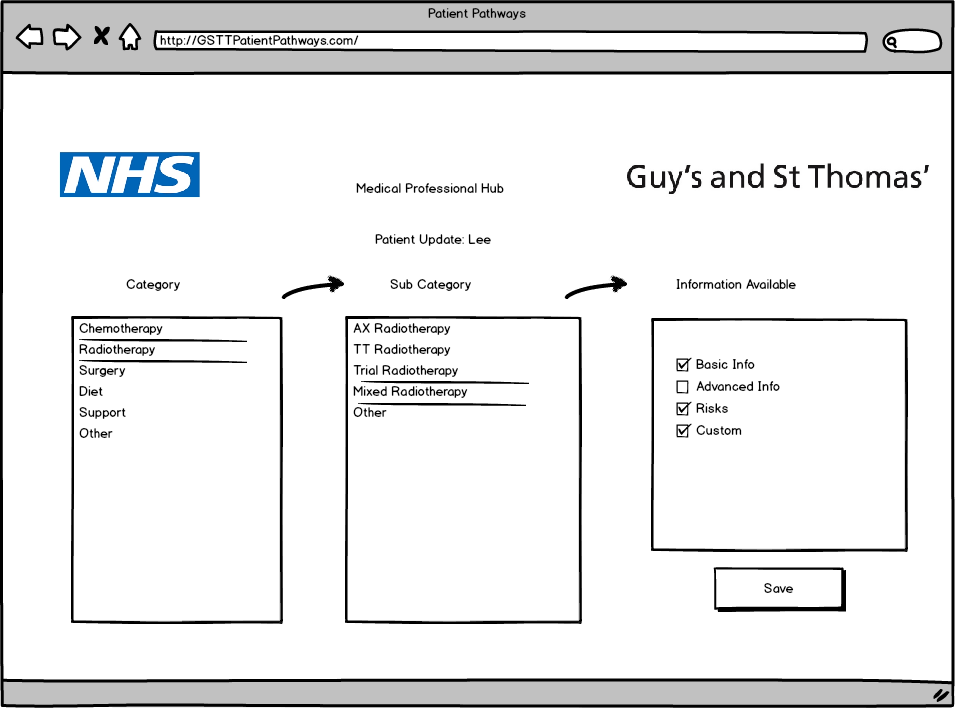
Final splash screen:

Final patient hub:
